Cylinder Head Remanufacturing
Below are the 14 steps we use in our cylinder head remanufacturing process. You can scroll down to view all steps or use the drop box to go directly to a particular step. Pressing the red arrow buttons will bring you back to the top of the page.
Step 1) Cylinder Head Disassembly
All cylinder heads are visually inspected for casting defects prior to their disassembly. The parts are then removed and individually inspected for damage and cause of failure. The oil and water passage plugs are removed to insure optimum results during the thermal cleaning process.
Only premium castings are used for our marine cylinder heads, all castings are replaced for all the salt-water applications. Our high performance cylinder heads are built with premium cores. In many applications new castings are used, as we never employ repaired castings. To retain your classic cars's original cylinder head casting, Promar employs the best skilled casting repair technicians in the industry.
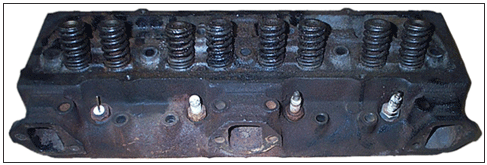 Dirty Cylinder Head
Dirty Cylinder Head
Step 2) Cylinder Head Thermal Cleaning
The thermal cleaning system gives our customers the closest thing to a new casting, taking engine parts to a whole new level of clean. The heaters emit uniformly controlled heat, which is evenly distributed throughout the chamber. This method totally eliminates the concentration of intense heat or flame entering the chamber, which could overheat, warp or melt parts. The load is heated to 650-800 F (340-427C) in an oxygen deficient atmosphere, where the combustible hydrocarbons decompose and parts leave the oven completely dry. This baking process used on cast iron cylinder heads only employs the Ace RKE 230 oven. Ash residue is easily removed by stainless steel shot blasting which is the next step in the cylinder head repair process.
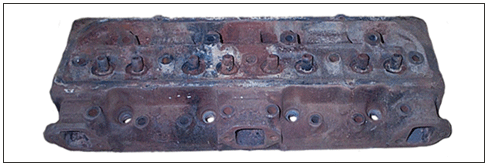 Oven-Cleaned Cylinder Head
Oven-Cleaned Cylinder Head
Step 3) Cylinder Head Shot Blasting
Our shot-blasting machine employs a cleaning method using stainless steel shot. This finishing process is used by Promar to remove surface contamination such as rust and irregularities from cylinder heads during remanufacturing. The result of this method is a cleaner smoother surface finish to make easy the detection of surface and subsurface casting defects during quality inspection.
To insure stress free casting, the peening process is used to impart compression strength to metal parts. This is accomplished by metal shot pellets acting like miniature ball peen hammers as they strike the entire surface of the cylinder head. All iron castings are put through this process before a preliminary inspection for defects is done. This process using the AR-HB41 is employed for cast iron cylinder heads only and facilitates a more accurate magnetic particle inspection.
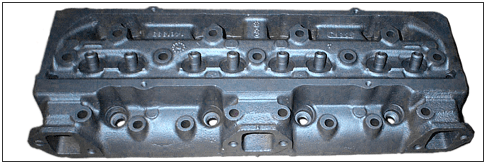 Shot-Blasted Cylinder Head
Shot-Blasted Cylinder Head
Step 4) Cylinder Head Magnafluxing
Magnetic particle inspection is the most definitive method of detecting cracks and imperfections in any ferrous engine parts. This procedure assures the highest quality cast iron cylinder heads. The next process of cylinder head repair is pressure testing, but first, let us explain how aluminum cylinder heads are cleaned, pressure tested and checked for casting defects.
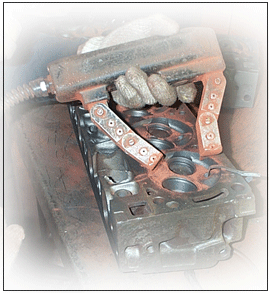 Magnetic Particle Inspection Process
Magnetic Particle Inspection Process
Step 5) Cylinder Head High Pressure Wash
The first stop for a qualified aluminum cylinder head during remanufacturing is our AXE SW20 OS spray cleaning system. With twice the spraying power and a dramatically increased number of multi integrated spray nozzles, this state of the art system assures Promar that all oil, dirt and foreign material is removed from even the smallest of oiling holes. Cleanliness of the aluminum cylinder head is essential to insure an accurate inspection. This process is used on all aluminum cylinder heads as a first step prior to the second step of ultrasonic cleaning.
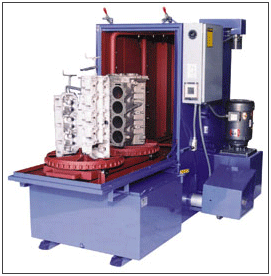 AXE SW-20 OS Spray Cleaning Machine
AXE SW-20 OS Spray Cleaning Machine
Step 6) Cylinder Head Sonic Cleaning
Promar's second process in the cleaning of aluminum cylinder heads during repair is the ultrasonic cleaning method, long known as the "benchmark" in cleaning. Hundreds of specifications reference an ultrasonically cleaned part as the ultimate target for cleanliness. Ultrasonic cavitation is able to clean right down to the surface of a part and beyond. It is also able to reach internal areas, which are not accessible by using other cleaning means including spray and mechanical agitation. The forceful nature of ultrasonic energy provides the physical "push" required to break the mechanical and ionic bonds that hold very small particles to surfaces. Once cleaned the cylinder head is sent for pressure testing.
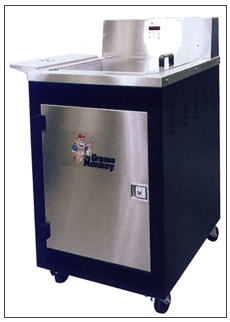 GMC-1818B Ultra Sonic Cleaner
GMC-1818B Ultra Sonic Cleaner
Step 7) Cylinder Head Pressure Testing
Promar uses the Delta Pressure tester to double check for pin holes after magnafluxing and dye testing are completed. Cracks and defects not detected during the first cylinder head remanufacturing process are found at this time. This second process insures the integrity of all castings used in Promar products.
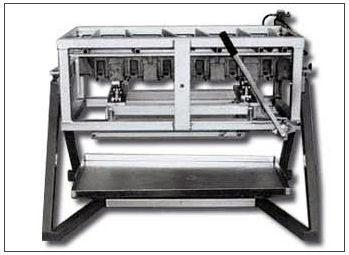 Delta 6000 Pressure Tester
Delta 6000 Pressure Tester
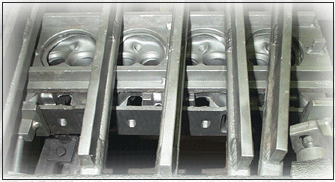 Pressure Testing Process
Pressure Testing Process
Step 8) Cylinder Head Preparation
During the head preparation and after pressure testing, minor cylinder head repairs are carried out. Broken bolts are removed and repair and tapping of threads completed. Gasket surface repairs are accomplished in order to minimize stock removal. All guides are inspected for replacement or fitted with new oversized valves. The heads are now ready for line honing.
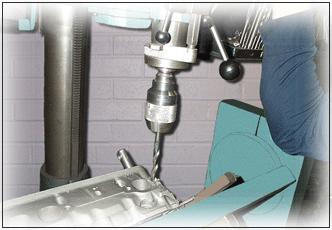 Broken Bolt Removal Process
Broken Bolt Removal Process
Step 9) Cylinder Head Line Hone
Promar engines continued its commitment to excellence when we purchased the RMC CNC V40 enclosed machining center. This machine is fully computerized and is equipped with a 24 pocket arm style automatic tool changer. The RMC V40 is a very fast, accurate and versatile machine for all of our engine block and general machining needs. Promar uses this to line bore cylinder heads from engines with overhead camshaft designs. With position repeatability within .0001”, there is no cylinder head machine more accurate than ours. After bored, all camshaft bores are measured with our Sunnen GR-6241 dial bore gauge to ensure sizes are within .0001".
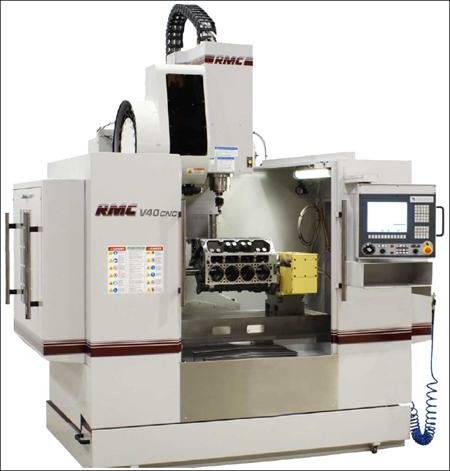 RMC V40 CNC Machine
RMC V40 CNC Machine
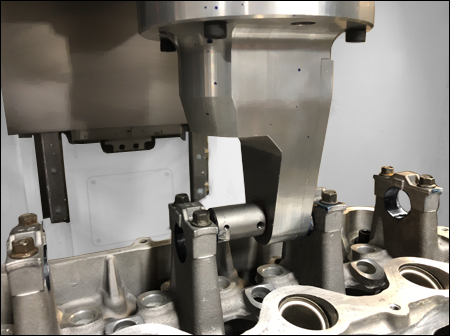 RMC Line Hone
RMC Line Hone
Step 10) Cylinder Head Machining
In cylinder head machinging, classic car heads previously designed to use leaded gas must be updated with seats and valves compatible for use with unleaded gas. Marine and high performance heads are fitted with new guides before valve seat resurfacing.
STEP 11) CYLINDER HEAD SEAT REFACING
ACTIV SPINDLE Programmable Automatic Valve Guide-to-Guide Cylinder Head Machining Center
The Rottler SG10XY ACTIV spindle is mounted on a sphere which allows the UNIPILOT to automatically center with the valve guide centerline while the Workhead is floating on air cushions. Once air floating stops and the Workhead clamps, the UNIPILOT and valve guide centerline are maintained while cutting the valve seat.
- ACTIV SPINDLE – Spherical Pneumatic Automatic Alignment System built into the Spindle for fast location of the pilot into the Valve Guide and Accurate Centering (Patent Pending)
- Air Float Work Head on Intermediate Base Plate
- Heavy Duty Spindle – Diameter 3.150" (80mm) Hardened and Ground with 8" (200mm) of vertical travel.
- Rottler Automatic Tightening and Quick Release Spindle Lock Nut System for One Hand Operation for fitting and removing tooling to and from the spindle – never comes loose!
Gives Best Concentricity
Rottler's Rigid Precision carbide centering UNIPILOTS are manufactured to less than one tenth (.002mm) tolerance. Combined with the light weight air float Workhead the SG10XYgives perfect centering in the valve guide and the best concentricity of any machine on the market,
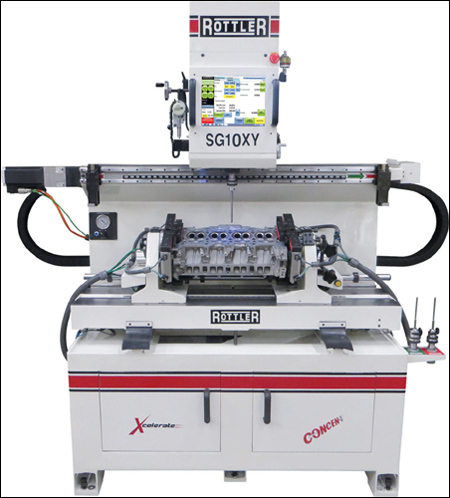 SG10XY
SG10XY
STEP 12) CYLINDER HEAD MILLING
Milling machines that are used by Promar are set up specifically for heads. The S85A model is designed for surfacing from the smallest to automotive and small diesel heads and blocks. The S85A is ideal for the requirements of the performance racing engine builder and production engine remanufacturer. The programmable downfeed with multiple passes is ideal when large amounts of material need to be removed in one set up. Angle milling and weld removal are also easily done in one cycle. Direct Drive Ball Screws and Linear Roller Bearing Slideways on vertical and horizontal movements combine to give precise motion control resulting in precision surface finish. Full Steel Enclosure surrounds the machine and keeps the work area clean and free of chips and protects operators from moving machine parts. Electrical Enclosure mounted on the side of the machine allows the back of the machine to be installed against a wall reducing floor space requirements.
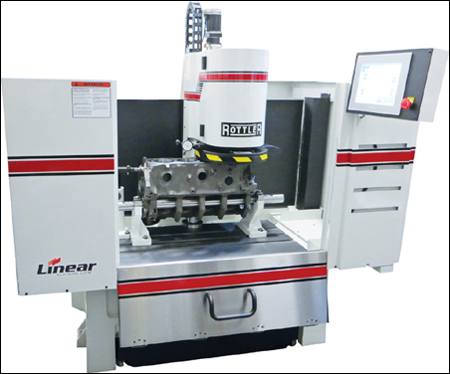 S85A
S85A
Step 13) Cylinder Head Final Wash
All heads are then washed with a mild detergent and rinsed before the final assembly.
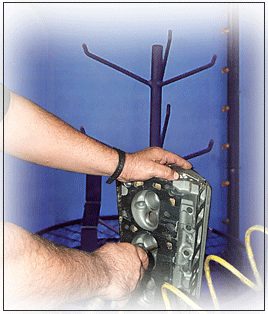 Cylinder Head Washing Process
Cylinder Head Washing Process
STEP 14) CYLINDER HEAD ASSEMBLY
At the time of assembly, Promar installs new oil and water plugs in all its cylinder heads, using brass plugs in our marine applications. The springs are checked for proper pressure as well as the installed heights checked and new Viton seals installed. All our overhead cam heads include new cams, rockers, lifters and cam seals.
Valve Refacing Machine with Centerless Grinding
Rottler's Centerless Grinding System is able to grind a set of valves to exact same length without adjusting settings. The Centerless System rotates the valve stem on it's own centerline. Precision drive rollers rotate the valve stem and a pneumatic low friction steady rest support the valve stem similar to a precision balancing machine, resulting in extremely accurate valve stem to valve seat run out less than .0002" (.005mm) TIR. The Rottler Centerless System allows a wide range of valve stem diameters to be ground without changing any collets or chucks. Stroking Handwheel – The new design stroking handwheel moves the valve back and forth over the grinding wheel. When operator's hand is removed from the stroking handwheel, the stroking system remains in position until the operator moves the handwheel again.
The final assembly process is accomplished using the CHW-50 Cylinder Head Workstation. This machine takes the work out of head assembly and disassembly. It makes precision automotive head rebuilding easier than ever. The entire valve train, including cams, rocker arms, cam buckets, springs, valves, etc. can be easily removed, reinstalled and adjusted while the head is mounted in the workstation. Once final assembly is completed the heads are vacuum tested and then wrapped.
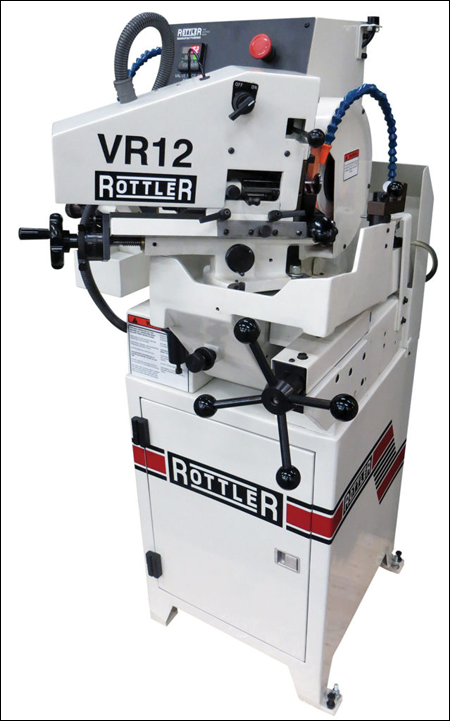 Rottler VR12 Valve Refacing Machine
Rottler VR12 Valve Refacing Machine
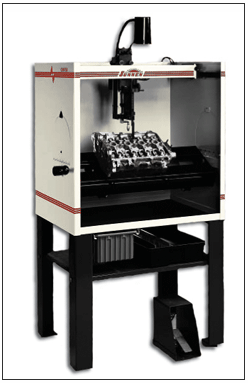 CHW-50 Cylinder Head Workstation
CHW-50 Cylinder Head Workstation
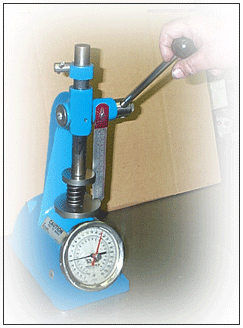 Head Spring
Head Spring